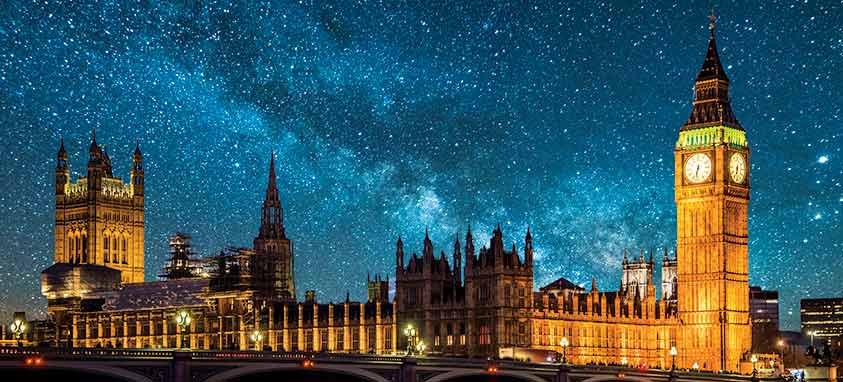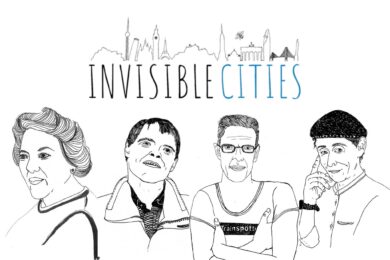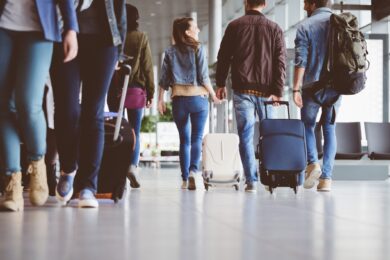Parliament Square and Big Ben
Vibrant and efficient, London pays dividends
Beyond the fabled castles, modern high-rises and expansive River Thames, London pays dividends for corporations and nonprofits that select it as a meetings destination. One of the world’s top financial centers, London is popular among event planners because it’s known as a productive place that thrives on international commerce and trade.
The biggest news to hit the United Kingdom in decades is Brexit, last year’s referendum to exit the European Union. Though controversial, the outcome thus far is positive for Britain’s travel and tourism business. Brexit has increased the value of key global currencies, especially U.S. dollars, relative to the British-pound exchange rate. Tourists, business travelers and event planners reportedly are getting more value for their money because of Brexit.
Tracy Halliwell, director of business tourism and major events at London & Partners—the mayor of London’s official promotional company and the convention and visitors bureau for the city—confirms this development. “Since the results of the referendum to leave the EU, the strength of the dollar against the pound means there’s never been a better time to host an event in London,” she says. “Between June and December 2016, our CVB welcomed a 30 percent increase in inquiries compared to the same period in 2015.”
That’s great news for London hotels, which have been expanding for years. The city featured 818 hotels in 2016 compared to 784 in 2015. Today, greater London has an estimated 146,000 serviced accommodation rooms, not including B&Bs, according to London & Partners (L&P).
Cvent ranked London No. 1 among the Top 25 Meeting Destinations in Europe in 2015 and 2016 based largely on the number of hotel rooms booked annually. London also entered the top five of the 2015 International Congress and Convention Association rankings for hosting events, up from 19th in 2011.
Business Travel Is Growing
Bustling millennials with smartphones have replaced stereotypes of stoic gentlemen in bowler hats, but one impression of Londoners remains intact. They take their business meetings seriously. They also enjoy afternoon tea, local pubs and lofty nightspots. The notion that Londoners work hard and play hard is evident in the number of business-focused hotels with meeting facilities, contemporary restaurants and bars with high-rise views.
 Park Plaza Westminster Bridge London
Park Plaza Westminster Bridge London
With views of Parliament and the London Eye from across the river, Park Plaza Westminster Bridge London is within walking distance of the city’s must-see attractions. Some modern suites offer expansive views of the city’s most iconic sites, including Big Ben clock tower. The hotel offers 1,019 guest rooms, 31 flexible meeting rooms with an impressive 39,370 sq. ft. of meeting space and a 2,000-seat theater.
Convenience is a major draw for guests at Hilton London Metropole, an estimated 20 minutes to Heathrow Airport (LHR). Offering 1,059 guest rooms, the hotel attracts event planners with its 28 meeting rooms and 18,553 sq. ft. of dedicated event space. The hotel also has 7,545 sq. ft. of exhibition space.
 Searcys at the Gherkin
Searcys at the Gherkin
InterContinental London–The O2 is touted as a conference center. One glance at the hotel’s interior and it’s easy to understand why—the luxury hotel looks like a modern art museum. Designed to accommodate meetings and entertain guests, The O2 has 453 guest rooms with 50 suites. Its 27,125 sq. ft. of meeting space encompasses 20 meeting rooms.
Elegance and comfort describe Grosvenor House, a JW Marriott Hotel. Originally built in 1929, today’s hotel is all about its premium location. Grosvenor House is situated on one of the most prestigious streets in London. The hotel offers 420 guest rooms and 29 breakout rooms, for a grand total of 64,110 sq. ft.
 The Orangery
The Orangery
Business travelers seeking a traditional meeting site might consider Hyatt Regency London–The Churchill. It’s located near London City Airport (LCY) and Hyde Park, but guests craving afternoon tea need not venture out. The hotel, which has 440 guest rooms, offers tea service in The Montagu restaurant, where finger sandwiches, French pastries and fruit tarts are served. The hotel also offers 6,740 sq. ft. of meeting space.
London Hilton on Park Lane stands tall as a 21st-century architectural monument to commerce and trade. The hotel is only minutes from upscale Knightsbridge, Buckingham Palace, Royal Albert Hall, and Kensington Palace and Gardens. It features 453 guest rooms, including 56 suites. The property has 13 meeting rooms with up to 10,082 sq. ft., and a theater-style facility that seats up to 1,250, plus breakout rooms for 20–50 delegates. The rooms can also be used for dining, accommodating 40–200 guests.
Millennials like M by Montcalm Shoreditch London Tech City Hotel. It has 269 guest rooms, adorned in minimalist designs focused on comfort. Meeting planners will find 4,306 sq. ft. of meeting space. Featuring free Wi-Fi and plenty of high-tech offerings, guest rooms have workspaces that reflect its location in the city’s Silicon Roundabout. The hotel’s two restaurants—Tonic & Remedy and Urban Coterie—feature gourmet chefs and cocktail masters.
A few blocks from the Thames and within walking distance of Tate Modern, Shakespeare’s Globe and The Shard, Hilton London Bankside gives London visitors a place to hang their overcoats and umbrellas. The hotel offers 292 guest rooms and 56,609 sq. ft. of meeting space for up to 600 guests.
Plenty of F&B in Town
 InterContinental London–The O2
InterContinental London–The O2
Planners hungering for intimacy and fine cuisine might consider The Orangery at Kensington Palace, which accommodates private receptions for small groups that meet for breakfast, lunch or afternoon tea. Prefer a birds-eye view? Try Searcys at the Gherkin. The fine-dining establishment stands above London and offers 360-degree views of the city’s famous skyline. Searcys provides seated dining for up to 140 guests and cocktail receptions for 260.
 Hyatt Regency London–The Churchill
Hyatt Regency London–The Churchill
For serious business-focused travelers, L&P’s Halliwell suggests The Wolseley and The Ivy, two of London’s most popular restaurants. She also recommends Sexy Fish, a trendy Asian-style restaurant known for attracting celebrities. Darwin Brasserie, set in the same building as Sky Garden, is another popular restaurant with great city views, Halliwell says.
Travelers who want to see the River Thames while dining should check out Sea Containers restaurant at Mondrian. Equally popular among millennials are City Social and Duck & Waffle (open 24/7).
Offsite Options Abound
 The Crystal
The Crystal
London offers thousands of diverse, historic and modern attractions, including 215 museums and 857 art galleries. Excel London provides more than 1 million sq. ft. of event space. Also home to London’s International Convention Centre (ICC), Excel features one of Britain’s largest flexible auditoriums, with adaptable seating configurations for up to 4,500 participants.
Located less than five minutes from the Thames, QEII Centre offers event spaces for 20–2,500 participants. QEII’s Mountbatten meeting room offers stunning views of Big Ben and London Eye Ferris wheel.
Contemporary art lovers will enjoy the prestigious Tate Modern. It offers spaces for private events with up to 600 guests. Royal Academy of Arts is a popular venue for events with up to 800 people. Business Design Centre features a main exhibition hall with more than 19,000 sq. ft. that hosts an estimated 250 conferences annually.
Alexandra Palace, a hip venue with a Victorian past that dates to 1863, hosts large groups and exhibitions. The Great Hall accommodates 2,500 to 7,250 guests.
 Excel London
Excel London
Corporate planners focused on sustainable energy should check out The Crystal. Operating entirely on solar power and ground-source heat pumps, it offers 14 flexible event spaces for groups, plus an auditorium seating up to 270.
English gardens are a perennial favorite, starting with Kew. Visitors will find a range of attractions there, from the Royal Botanic Gardens to an indoor atrium to a Chinese Pagoda built in 1762.
 Columbia Road Shops & Flower Market
Columbia Road Shops & Flower Market
Open-air flower markets are popular among travelers. “Increasingly, visitors are interested in heading outside of central London to discover off-the-beaten-track areas,” Halliwell says.
As favorites among business travellers seeking R&R, Halliwell lists Hoxton and Shoreditch and Columbia Road Shops & Flower Market, both on London’s East End. “Culture and historical attractions are always very popular with leisure and business visitors,” she says. “Tower of London, Covent Garden, Borough Market, the Changing of the Guard at Buckingham Palace and West End theaters are a real draw for American visitors.”
With so much to see in London—combined with stronger foreign currencies—savvy planners are choosing the city to host corporate meetings and international events. That translates into more business for U.K. hotels, convention centers, restaurants, museums and other attractions.
It all bodes well for companies and organizations eyeing London as an upcoming global destination.
6 London Airports Connect Travelers
London boasts six international airports and hundreds of direct flights to domestic and international destinations.
Travelers can catch public transportation on the Tube or Docklands Light Railway (DLR) directly from Heathrow Airport or London City Airport. The mainline train runs to Central London from Gatwick Airport (LGW), Heathrow Airport (LHR), Luton Airport (LLA) and London Stansted Airport (STN).
“The city’s accessibility is a major draw for event planners,” says Tracy Halliwell, director of business tourism and major events at London & Partners. “London’s public transport network is constantly updated to cope with demand, and two new stations will open in 2020 in the Battersea area, near the future U.S. embassy.”
Halliwell points to the Crossrail transportation project, scheduled to be completed by the end of 2018. Crossrail is expected to reduce by half the travel time for passengers heading to west London from the east side.
London’s six airports (with approximate travel time to the city’s center):
- Heathrow Airport (15 minutes)
- London City Airport (22 minutes)
- Luton Airport (24 minutes)
- Gatwick Airport (30 minutes)
- London Stansted Airport (47 minutes)
- London Southend Airport (SEN) (53 minutes)
Unicorns Bring Cachet

Befitting a place where mythical horses adorn centuries-old family crests, London has quietly become the No. 1 destination in Europe for globe-trotting unicorns—tech start-ups valued at $1 billion or more. Unicorns bring major cachet to London among high-tech investors and millennials, who view the city as more than just a nice place to visit. They want to stay and prosper.
“London is home to more so-called tech unicorns than any other country in Europe,” wrote Lynsey Barber in a column for City A.M., citing Entrepreneur magazine, which recently ranked London No. 1 among the top 20 high-tech research centers in Europe.
“London attracts more European HQs than any other major European city,” adds London & Partners, the mayor of London’s official promotional company and the convention and visitors bureau for the city.
TechCity UK reported that technology investment in the United Kingdom in 2016 totaled $8.4 billion, twice as much as other European nations. It’s a key reason business travel to London is thriving.
To capitalize on London’s digital investments, numerous U.S. high-tech firms have recently increased their presence in the U.K., including Apple, Amazon, Snap and Google, which announced plans to hire more than 3,000 U.K.-based staff.





